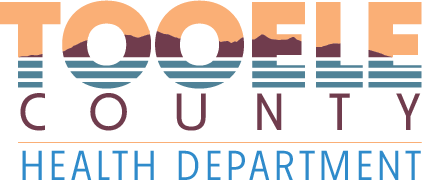JUNE 18, 2020
Local expert debunks mask myths
Health Department epidemiologist confirms: “face masks or face coverings prevent the spread of droplets and infecting other people.” ♦
Editor’s note: In the early stages of the COVID-19 pandemic the Center for Disease Control and Prevention discouraged the public from wearing face masks. Later they reversed that position causing some confusion. Transcript Bulletin writer Ceilly Sutton worked with Tooele County Health Department officials to sort out current recommendations and information regarding the use of face masks.
Tooele County Health Department epidemiologist John Contreras encourages the community to wear face masks during the pandemic.
Contreras readily debunked some of the common myths of wearing masks with information about why it is beneficial for people to wear masks.
Gov. Gary Herbert’s office published a press release June 12, about why it was important for individuals to wear masks at this time, because many people have been wondering about the science behind masks wearing.
According to Herbert’s press release, scientific studies have shown that COVID-19 virus is commonly released and spread through aerosol particles emitted through the nose and mouth.
This is done by individuals who are symptomatic, coughing or sneezing, but can also occur when asymptomatic carriers are simply breathing or talking, according to state health officials.
“This aspect of the disease spread is part of what makes containing coronavirus so difficult. When even a mildly symptomatic individual is out in public not wearing a mask, they are potentially spreading the disease to those around them,” the press release stated.
Without a face covering, carriers of the virus are far more likely to spread the disease in close proximity situations, but according to the release, even the simplest face mask that covers one’s nose or mouth can stop the transmission of aerosol particles containing COVID-19.
“Because of this, most face masks being worn and distributed to the public are not necessarily intended to stop the wearer from inhaling the aforementioned aerosols. Rather, they are designed to stop the wearer from emitting aerosols into the air and spreading the disease,” the press release said.
Even a simple cotton mask can reduce the emission of aerosol particles as much as 99%, according to state health officials.
Epidemiologist for the Tooele County Health Department, John Contreras, answered some questions people have asked about masks following Herbert’s press release and request that Utahns voluntarily wear masks when in public.
When asked if face masks really work, Contreras said:, “A primary route of transmission of COVID-19 is likely via small respiratory droplets and is known to be transmissible from pre-symptomatic and asymptomatic individuals. Reducing disease spread requires two things: first, limit contacts of infected individuals via physical distancing and contact tracing with appropriate quarantine, and second, reduce the transmission probability per contact by wearing masks in public, among other measures — washing hands and not touching face. Public mask wearing is most effective at stopping the spread of the virus when compliance is high.”
What if the box they come in said the masks do not work?
This information may be interpreted incorrectly, according to Contreras. Masks are effective in reducing the spread of the disease because they help stop pre-symptomatic and symptomatic individuals from unknowingly spreading the disease, he said.
Another question that was asked was: if an individual wasn’t wearing an N-95 style mask, was it effective?
Contreras stated that even though N-95 style masks are the most effective at filtering out particles, individuals do not need to wear these types of masks to limit their exposure to the virus.
When asked: “So, they are one-way masks, you say to wear one to keep me from spreading the virus, but a mask won’t stop me from getting the virus?,” Contreras said: “The mask prevents or reduces the spread of the disease from pre-symptomatic and asymptomatic individuals. It does not provide protection from individuals becoming infected with the virus. This is due to several factors including touching face, ears, and reproductive area.”
Another frequently asked question about masks has been that the CDC told individuals during the beginning of the pandemic not to wear a mask, why the “flip-flop?”
Contreras stated that as health departments and the CDC learned more about the transmission of the virus based upon various mitigation measures put into place in three major centers of the outbreak — Wuhan, Italy, and New York City — stay at home and social distancing orders did not change the curve dramatically. What changed the curve was making masks mandatory.
The last question asked was: People touch their masks and then touch other things and spread the virus. Why should we were a mask?
To this Contreras stated: “The only way a person can spread the virus is if they are infected with the virus. They can be pre-symptomatic and asymptomatic or with a current infection with manifested symptoms — in which case they should stay home. The face masks or face coverings prevent the spread of droplets and infecting other people.”
“During the coming days and months, it will remain critical for everyone to wear masks,” said Herbert’s press release. “Of course, the habit of wearing a face mask when out in public is not always easy to remember, and all of us are still working to remember to implement these best practices. We hope that all Utahns understand the importance of wearing a mask and will be diligent in their efforts to wear one.”

